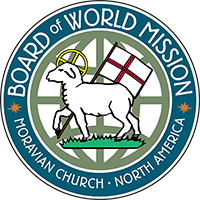(The Infant Feeding Program in Honduras is one way the Board of World Mission invites us to define ministry as caring for others before caring for ourselves)
Defining our Identity: A Lenten Journey
By Bishop Chris Giesler
Preaching Text: Mark 1:9-15
How do you introduce yourself? If I am introducing myself, I might say:
- Hi, I’m Chris Giesler, and I am from Bethlehem, PA
- I am a Moravian pastor who works with our Board of World Mission
- I am married to Tina, and we have two children and six grandchildren
- I have a southern accent, and I spent most of my growing up years in Nicaragua and then North Carolina
- I am a born Moravian
- I love to play my guitar and lead music in worship
- I don’t like winter very much, especially from the middle of February. Right now, I am more than ready for spring!
Let’s look at how Jesus might identify himself.
- He is first described in our text today as being from Nazareth
- At his baptism, the spirit descends on him like a dove, and his heavenly father’s voice further identifies him: “You are my son, the Beloved, with you I am well pleased.”
- Until this time, if Jesus had introduced himself, he would have said, “My name is Jesus, and I’m Joseph and Mary’s son from Nazareth, and like my father, I am a carpenter.”
- But now I feel he would say things differently, “I am Jesus, a beloved child of God, and I have a new mission.”
But to define that new mission and to solidify this new identity, Jesus needed this wilderness experience that Mark’s account describes for us. Here, Mark’s Gospel tells us that Jesus was driven to the wilderness by the Holy Spirit for 40 days, where he was with the wild animals. While there, he was tempted, and the angels waited upon him. Mark’s account is the “Readers Digest” version of this profound experience for Jesus, whereas Luke and Matthew give us more details on the temptations Jesus experienced. In those accounts, we are told that the devil tempted him to feed himself by turning the stones (which are plentiful in the Judean wilderness) into bread. Then, the devil tempts him by placing him high on the pinnacle of the Temple and dares him to throw himself down, forcing God to save him with angels. Finally, Jesus is tempted to take the rule of the earthly kingdoms, giving his allegiance to the devil. In each case, Jesus rebuffs these temptations to profit from his power selfishly and instead defines his ministry with humility and a desire to serve for the benefit of others.
It took 40 days for Jesus to set the agenda and priorities for his ministry. The devil had one set of priorities and offered Jesus one way of defining himself. But Jesus chose God’s priorities and set his identity in line with God’s will. Perhaps it might take 40 days for us to ponder our priorities and set our identity. This is what Lent is for, after all.
These days, we are all worried about identity theft. We are very concerned that somebody might steal our Social Security number and bank account information and use that information to purchase things or clean out our bank account. On a deeper spiritual level, however, this Lenten season may give us a chance to ask who or how our spiritual identity might be stolen. Perhaps this Lenten season is our opportunity to help define just who we are and the places where our identity needs a bit more like Jesus’. This might be a time to determine how wealth, prestige, appearance, and comfort get in the way of us seeing ourselves as the beloved children of God that we are.
The cross is the symbol of Jesus’ sacrifice for us. It is not just a decoration on the wall or a fancy piece of jewelry. The cross is the assurance of the forgiveness of our sins, and Lent is our opportunity to count the places where we need that grace and identify ourselves as God’s beloved children. It also defines us as children of God with a mission to let others know that they are beloved, not only by our words but by our actions.







